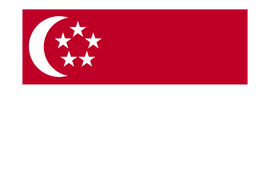
U.S. Makes Preliminary Decision on Ceramic Abrasive Grains From China
Estimated reading time: 7 minutes
U.S. Makes Preliminary Decision on Ceramic Abrasive Grains From China
The U.S. Department of Commerce has made a preliminary decision. It says sol gel alumina-based ceramic abrasive grains from China are being sold in the U.S. at less than fair value. The decision was announced on June 2, 2025. The investigation covers sales from April 1, 2024, to September 30, 2024.
Background of the Case
The Department started the investigation in January 2025. It noted a possible error in the scope and fixed it with a correction. The Commerce team studied all facts and evidence. The investigation followed the procedures in the Tariff Act of 1930.
Scope of the Investigation
The investigation covers sol gel alumina-based ceramic abrasive grains. These grains are made mostly of aluminum oxide (at least 94%). They can include titanium dioxide, magnesium oxide, and other compounds. Grain sizes range from 0.85 mm to 0.0395 mm.
The grains can be different shapes, such as sharp, round, triangular, or blocky. They have special crystal structures. These give the grains high hardness (16-22 gigapascals by the Vickers Diamond Indent Method) and a high melting point (2050°C). The grains can look blue, white, or off-white.
These abrasive grains are included in the investigation even if they are put into other products. This includes grinding wheels and abrasive papers. Only the grains are included, not the whole product. The grains are usually traded under specific tariff codes, but the written description is the deciding factor.
Comments on the Scope
The Department allowed comments on the product coverage. A company, Weiler Corporation, gave comments, but the Department did not change the scope at this point.
Investigation Results
The Department used certain rules because no respondent qualified for a separate rate. The China-wide entity received a preliminary weighted-average dumping margin of 88.32 percent. The cash deposit rate, after adjusting for subsidy offsets, is set at 72.22 percent.
Suspension of Liquidation
The Department will direct U.S. Customs and Border Protection to suspend entries of the goods. This starts from the date notice is published in the Federal Register. Importers must pay a cash deposit, based on the margin above.
If measures in a related countervailing duty investigation end, the deposits may change. These instructions will stay until further notice.
No Calculations to Disclose
No calculations will be shown to the public because the Department used facts available and adverse inferences. There are no specific calculations to share.
No Verification
The Department will not run further checks. This is because the main respondents did not give the needed data and were found uncooperative.
Next Steps and Public Comment
Anyone interested can submit briefs or written comments. These must be sent within 30 days after this notice. Rebuttal briefs are due five days after case briefs. All briefs must include a table of contents and a table of authorities.
People may also request a hearing. Requests need to be filed within 30 days, and must contain contact details and a list of topics.
Final Determination and Commission Notification
The Department will make a final decision within 75 days after this preliminary notice. The U.S. International Trade Commission (ITC) will use this decision to check if there is harm to the U.S. industry. If the final result is affirmative, the ITC will decide if the imports injure or threaten U.S. producers.
Official Contact
For questions, contact Thomas Cloyd at the U.S. Department of Commerce, (202) 482-1246.
Reference
This notice is signed by Christopher Abbott, Deputy Assistant Secretary for Policy and Negotiations. The official text is published in the Federal Register, Volume 90, Number 104, on June 2, 2025.
Legal Disclaimer
This article is for informational purposes only and does not constitute legal advice. For case-specific consultation, please contact us. Read our full Legal Disclaimer, which also includes information on translation accuracy.








